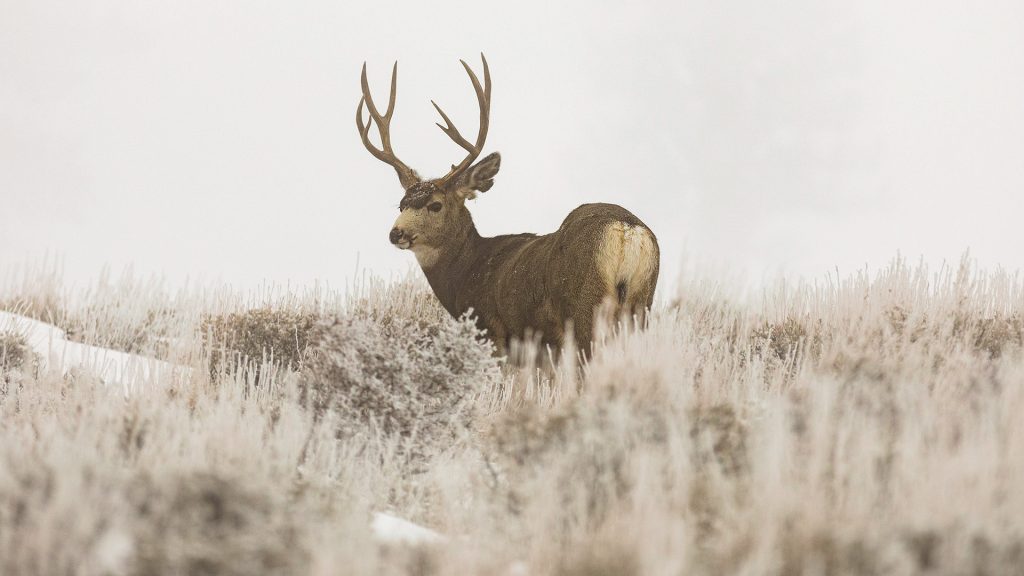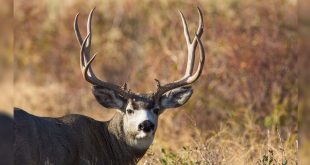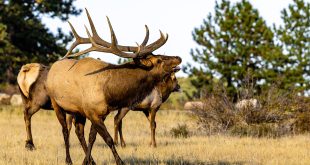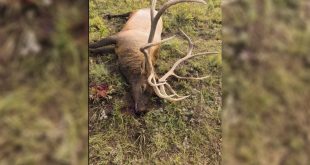
If you usually hunt (or plan to hunt) mule deer in Oregon, big changes are coming your way. In 2024, the Oregon Department of Fish and Wildlife (ODFW) adopted a new Mule Deer Management Plan. It was the first major overhaul in more than two decades. As hunting, habitat, and deer herds have changed dramatically over that time in the Beaver State, this update prioritizes making sure hunters are part of improving deer with better data and management decisions.
Josh Smith, the state’s Mule Deer Coordinator, recently sat down to explain what’s proposed for mule deer hunters. From hunt area restructuring to updated population models, there’s a lot in motion. And while many of these changes are aimed at better science and long-term sustainability, they will definitely impact how you plan your hunts starting in 2026 and beyond.
Here’s what Oregon mule deer hunters need to know ahead of the 2025 tag draw, and how to get ahead of the curve for the 2026 changes.
Why the Change?
ODFW’s previous management plan was over 20 years old. In that time, Oregon’s mule deer landscape has shifted in big ways: increasing drought, habitat loss from fire, highway collisions, and of course, predators have all affected deer survival and distribution. According to Josh Smith, managing Oregon’s deer using outdated unit boundaries and data collection methods just wasn’t cutting it anymore.
“Too much of our current unit system was based on socio-political boundaries,” Josh says. “But deer don’t care about county lines—they follow the habitat.” To fix this, ODFW is moving toward aligning hunt areas with actual deer migration patterns, which were studied from 2005 to 2019 using GPS collars on over 1,400 animals. That collar data is now forming the backbone of new herd-based management units.
What’s Coming Down the Pike?
Here are some of the major shifts mule deer hunters need to pay attention to:
1. New Management Units Based on Migration
ODFW is planning to restructure hunt areas to reflect how deer actually move across the landscape. Instead of drawing lines based on human geography, like highways and rivers, the new units will follow real migration corridors and seasonal ranges. Expect to see some units combined, reshaped, or renamed. In particular, the Ochoco, Fossil, Silvies, and Beatys Butte, units could look very different from their old structure. Of course, other units will be different, but all of these are proposed to become parts of 3 different units instead of their singular old selves. This could also really help spread hunters out when wildfires rip through an area and give people more places to still hunt if their unit goes up in flames.
2. Updated Tag Structure
While no specific tag numbers are available yet, Josh confirmed that some zones may see tag increases, while others will face reductions depending on what their specific herd data shows. These adjustments take into account population models, habitat health, and harvest data, so don’t assume your go-to tag will look the same in 2026.
There are also talks of separate bag limits for whitetail and mule deer in areas where both are around in high numbers, especially in northeast Oregon. This could create new opportunities, and maybe even separate times of the fall for hunting whitetail in Oregon, but also add layers of complexity to planning.
3. A New Naming System
To cut down on confusion between the new and old systems, ODFW is considering changing how it names hunt areas in the new plan. The idea is to use abbreviations for the herds coupled with area codes that reflect where you can hunt, making it easier for hunters to know what they’re applying for. Ideally, it prevents hunters from making the mistake of dropping a bunch of points for an area they did not intend to when they put these changes into the application system.
4. Better Data, Smarter New-Age Models
Even though this may not impact the average hunter’s trip directly, ODFW is transitioning to a statewide integrated population model. This will replace the inconsistent patchwork of aerial surveys and harvest reports with a more stable, science-backed system that’s caught up with the 21st century. These models can better account for fluctuations, predict what is going to happen in the future with herds, and help the agency make more proactive calls on what to do with hunting seasons.
What Should You Do as a Hunter?
Being that the new regs will not be approved until September of this year, the transition won’t happen overnight. However, hunters who keep their thumb on the pulse of ODFW’s proposals will be in the best position to adapt and plan their hunts accordingly. Tag structures and hunt area maps will be updated online as the new system rolls out. Bookmark the big game regulations page and check it throughout the year, especially in early 2026 when they are normally posted for the coming fall.
Read Eastmans’ TagHub!
With possible changes to season structures, tag quotas, and unit boundaries, you may need to start planning your hunt earlier than usual. Flexibility and early research at units in our write-ups on Eastmans’ Tag Hub, as well as in the physical journal, will be key in the coming years.
Each of the Eastmans’ write-ups and data on Taghub takes into consideration trends in populations, how hunters are doing in recent years in units, and what to expect for trophy quality and hunting pressure.
Final Thoughts
Change can be uncomfortable, especially when it affects something as deeply rooted as hunting traditions. Heck, I am not super sure I want to see my home units changing like this.
These updates are designed with long-term sustainability in mind. “We’re not taking away hunting opportunities,” Josh reassures. “We’re just trying to make sure those opportunities are around for the next generation, too.”
By aligning management with a pile of real migration data, refining the modeling process, and making hunt structures more intuitive, Oregon is taking a big step toward better mule deer management.
So sharpen your e-scouting skills, stay informed, and be ready to adapt. The state of mule deer across the West keeps changing, and as we get better information, maybe the management of them should, too.
Source Link:
 Eastmans' Official Blog | Mule Deer, Antelope, Elk Hunting and Bowhunting Magazine | Eastmans' Hunting Journals
Eastmans' Official Blog | Mule Deer, Antelope, Elk Hunting and Bowhunting Magazine | Eastmans' Hunting Journals





Why don’t you start informing people about Republicans getting ready to sell federal public lands? This is way more important than anything right now? Do something!
Well gee,,,Oregon finally using ACTUAL HERD BIOLOGY to manage mule deer herds, WHAT A CONCEPT! Its only 25-30 years too late for that! If only they had done this back in the early 90’s MAYBE we would have better herds now. Next year might be the year to burn my deer points. FWIW: I proposed a plan to ODFW about 15 years ago that was almost a 100% mirror of the proposed new system but included a rotating 3pt or better rule in some areas. My plan was just about down to the exact zones they are proposing, but I included the Klamath Falls and Keno unit to gether. Im not even a biologist, just a hunter and life long oregon resident of over 55 years.